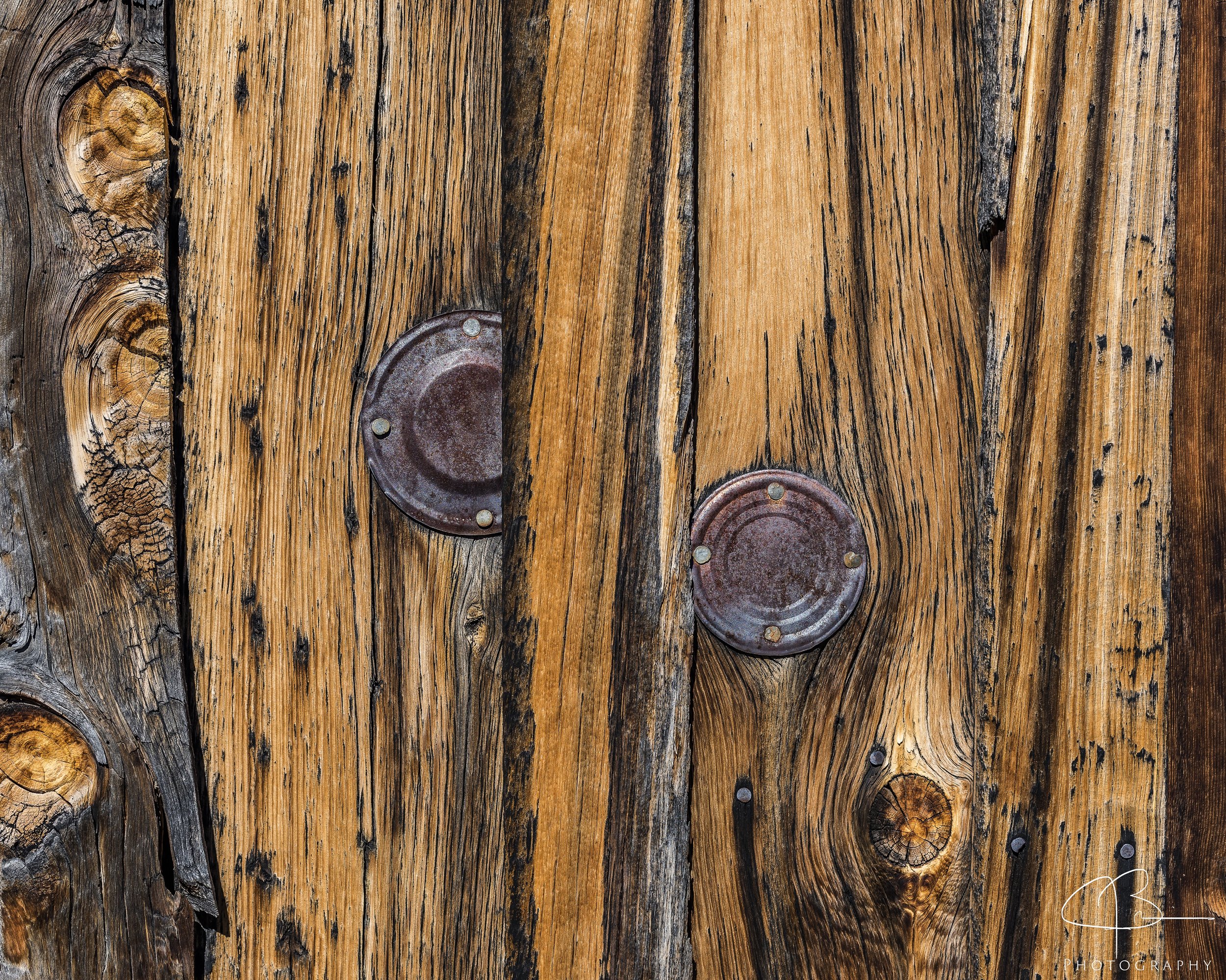There is an old horse barn on our property, about a hundred and fifty yards from the hard surface (paved road) and adjacent to the driveway leading to the house. Like the wood snow fence alluded to in an earlier post, the barn is a local landmark. We have known of people driving onto the property to photograph this barn. Technically, they were trespassing, but some folks know no boundaries.
Structurally, there are two stalls in the front half and three in the back with a tack and feed room between. Both sets of stalls open onto small corrals. There is electricity, but based on the wiring I suspect that it is a much more recent addition. This lantern is a remnant from the pre-electricity era. You can also see that the internal timbers are of a rough cut.
The surface structure is in poor condition, but the barn is still functional. The previous owner’s daughter brings her horse to our place periodically, so there is a familiar, pungent, horse scent in the barn. However, we don’t have horses, and there is otherwise little-to-no economic incentive to update it. Even in its current state though, the barn has character, especially in the textural and colouring patterns of the outside boards, a subject that I will cover separately.
I don’t know the barn’s age, but it is old as is obviously by its condition; however, there are other age-related clues that suggest that it was built in the WWII era or earlier. My conclusion is based in part on the way self-reliant farmers and ranchers of my father’s generation worked, often fashioning or machining parts with their own tools and devices rather than driving on unpaved roads to a hardware store to purchase a hinge or a latch – if there was a hardware store. Another indicator is that there was a small shop on the property with an oil change pit and bench spaces. With that in mind I’ll show some examples of what I interpret as self-reliance in the form of home-engineered devices.
Self-Reliance Example 1. Here is a very simple one-way door lock with a rough-cut wooden bar and a simple metal catch.
The catch was probably shaped by heating it in a forge and shaping it on an anvil with a hammer. Or the hot metal could have been held in a vice and shaped with a hammer. The holes had to be created in a drill press. My father used these or similar resources, so I would surmise that the person who built this barn and made these objects had access to similar tools.
Note: As a one-way lock, there’s no exit from the other side.
Self-Reliance Example 2. Here is another door latch system, and excepting the spring, it would have been 100% home-made - with the addition of another shop tool, a welder. Again, there are heat-moulded pieces and drilled holes. The mechanism allows the spring-retained, door-mounted piece, to ride up the the slanted frame-mounted catch and drop into the slot. The slanted surface on the catch shows a “bead” created by a welder for the purpose of hardening the surface of the catch. This is a two-sided latch; it can be opened from either side of the door.
Self-Reliance Example 3. While making this hinge would probably be beyond the skill-set of a home shop the over-size hinge pin is definitely a home-added piece, probably pulled from a bucket of items discarded from other projects. The empty bolt hole, paint job and rust indicate the passage of some years too.
Self-Reliance Example 4. Maybe this one is not so much a “made” solution as it is a creative use of an every-day object. It’s not recycling in the modern sense, but it is at least “repurposing” of tin can lids. So what is being covered? Knotholes! The outside surface boards of the barn were cut from ponderosa pines that had an abundance of limbs growing out from the trunks. Limb remnants in the sawn boards are knots, and knots in untreated boards eventually dry and maybe fall out, leaving knotholes. So, what better way to cover a knothole than to nail a tin can lid over it?
There are other oddities in the barn, including horse-gnawed stall dividers, coat hangers in strange places, and other items, but for now I’ll let such trivia lie. With these examples of the barn’s hardware, suggestive of some degree of long-ago, before Lowe’s, owner self-reliance, I’ll close this segment of “barn-ology” and return later with another piece on the barn’s wood beauty.






